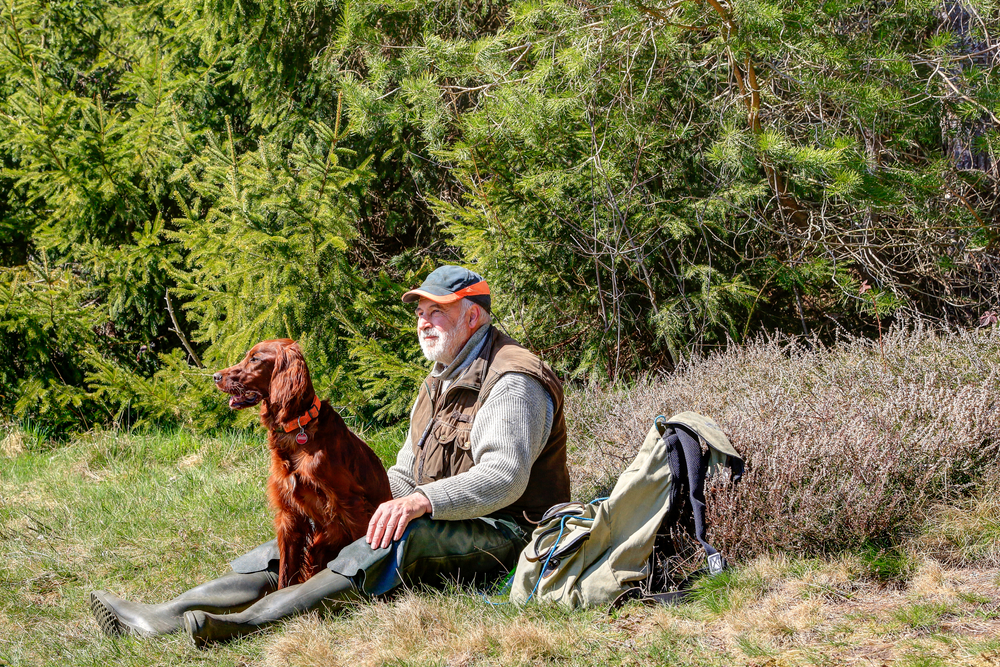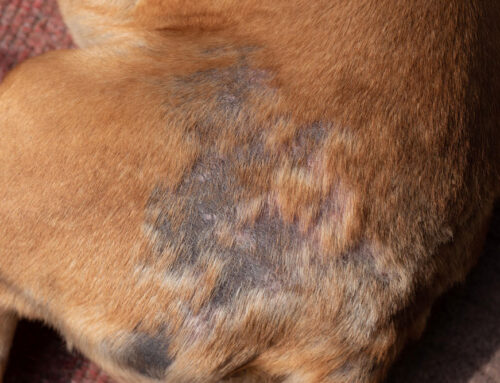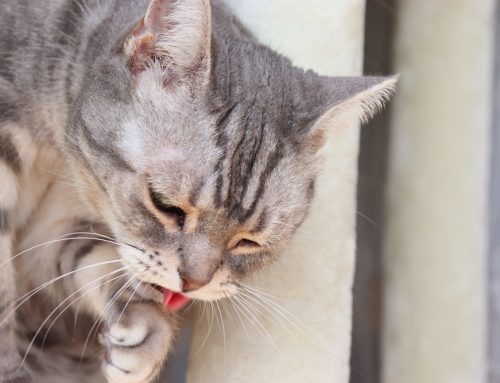It’s a morning like any other. You open your eyes, and Toby, your Irish setter, is lying right next to you, with his tail wagging.
“Happy Birthday, Toby!” You don’t know exactly when Toby was born, but when you adopted him four years ago, you made his adoption date his new birthday.
“It’s all about you today, Toby! I have a day of fun planned—a hike this morning, and a walk downtown this afternoon to see the dog statue I know you love.”
You check the weather—it will be hot—in the mid-to-upper 90s. It’s time to leave.
Packing for your pet
Since Toby stays by your side most of the time, you already have a pre-outdoor hike routine in place.
- Food and water — You start by packing snacks, water, and a water bowl for Toby, because he’s sure to get thirsty during the hike. You bought snacks for Toby and yourself on the way home last night, so you don’t need to stop on the way, with Toby in the car. Pets should never be left in cars on hot days, because they can heat quickly to dangerous highs and cause life-threatening heat-related illness to pets inside, despite your intention to make only a quick stop in the grocery store.
- Pest preventive — You check whether you gave Toby his flea, tick and heartworm prevention this month. You did, so Toby is protected against these parasites, and the diseases they can cause. After all, these pests love the warm weather as much as people.
- Pet-safe sunscreen — You apply sunscreen—a pet, not human, product—to Toby’s less densely furred areas, such as his nose and ear tips, because dogs not only can get sunburned, but also can get skin cancer.
Hiking with your pet
The adventure begins. You arrive at the trailhead of the Five Mile Park Greenway and, before you let Toby out of the car, you remember another way the heat can hurt him.
- Paw pad protection — Pets do not wear shoes; pavement gets scorching hot in summer. You check the ground temperature with the palm of your hand, knowing that if it’s too hot for your hand, it’s too hot for Toby’s feet. Hot pavement can create painful burns on the bottom of a dog’s paws that often require medical treatment.
Fortunately, the day is early and the pavement cool enough that you don’t have to carry Toby to the dirt path. As you are hiking along, Toby sees his favorite thing in the whole world—a fluffy-tailed squirrel. He leaps off the trail to follow the frightened creature into the forest. You run after your pet, and find him at the base of a tree, barking at the squirrel.
“I know you love squirrels, and I know it’s your birthday, but let’s get back to the trail,” you tell Toby.
Then you see that Toby must have been injured by a sharp stick in the forest. It doesn’t look too bad, but you decide you should get a veterinarian to look at it, in case Toby needs stitches.
You find Tidmore Animal Hospital’s website on your phone and give them a call. “Of course we will see Toby today!”
Off the trail, into the veterinary hospital

You chose Tidmore when you adopted Toby, after learning it was an AAHA-accredited hospital, and then researching why AAHA accreditation was important.
The American Animal Hospital Association (AAHA) was started in the 1930s, and is the only organization that accredits U.S. and Canadian veterinary hospitals for attaining AAHA’s high standards of excellence. AAHA was founded by seven veterinarians who wanted to encourage veterinary clinics to strive for excellence in medicine, and the organization continues to develop and maintain guidelines that set the benchmark for gold-standard care in all aspects of veterinary medicine.
Although veterinary practices are not required to be AAHA-accredited, many voluntarily submit to the accreditation process, because they want to ensure their practice measures up to the highest, most up-to-date veterinary medicine standards. Because it’s voluntary, and achieving accreditation is rigorous, and requires hard work and dedication from the entire team, only 12% to 15% of U.S. veterinary practices are AAHA-accredited.
Plus, accreditation is ongoing after the original achievement, and not automatically maintained. AAHA evaluates veterinary practices every three years on more than 900 standards, such as:
- Disinfection procedures
- Record-keeping
- Medication inventories
- Purpose-specific exam rooms
- Anesthesia drug use
- Pain management protocols
Pet owners will appreciate the high quality, skilled treatment that an AAHA-accredited veterinary hospital provides, and can always be confident that their pet receives the best possible care.
When you bring Toby into Tidmore Veterinary Hospital, you relax a little, knowing he will be treated promptly, with great care. You completely trust the veterinarians, the staff, and any procedure and medication they recommend. After your veterinarian examines Toby and finds his wound needs only to be cleaned, and no stitches, you are off again for the second half of your beloved pet’s birthday treat, to stroll downtown together.
Our hospital team is proud of our AAHA accreditation, and we always strive to maintain the highest standards of care. If you have a special dog like Toby who needs help, give us a call.








Leave A Comment